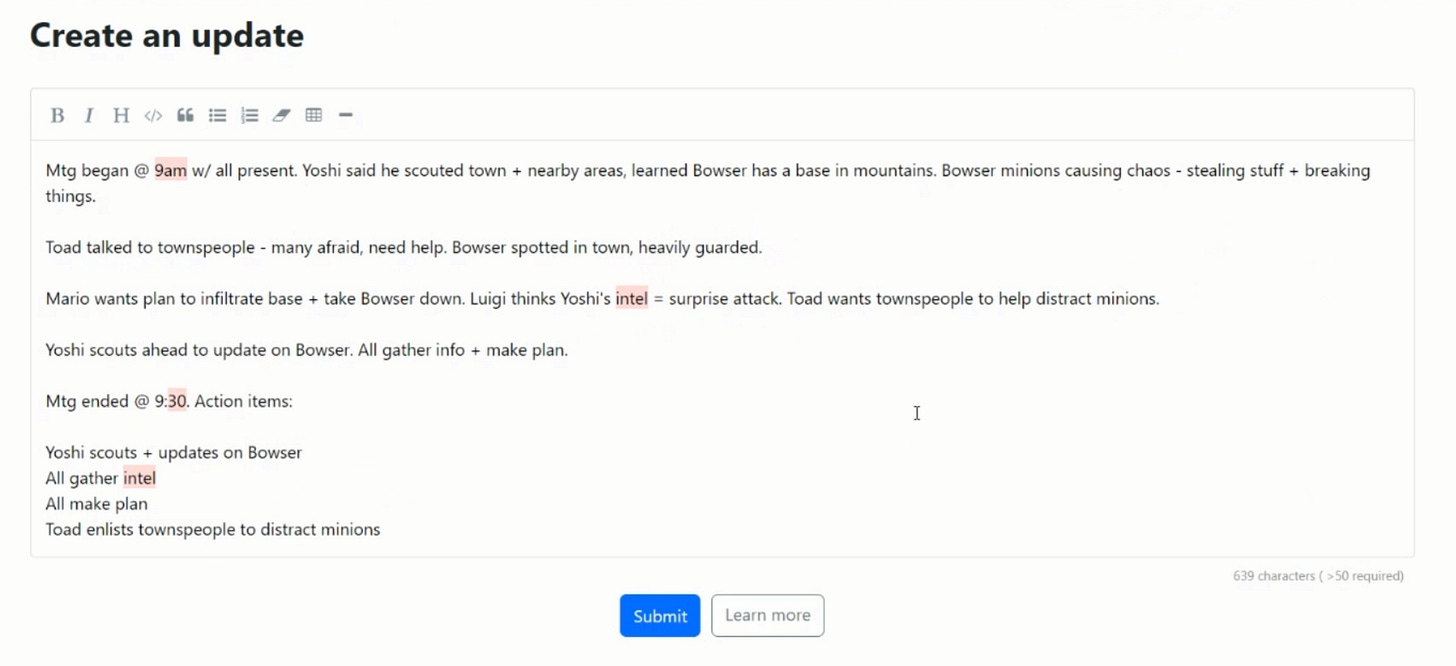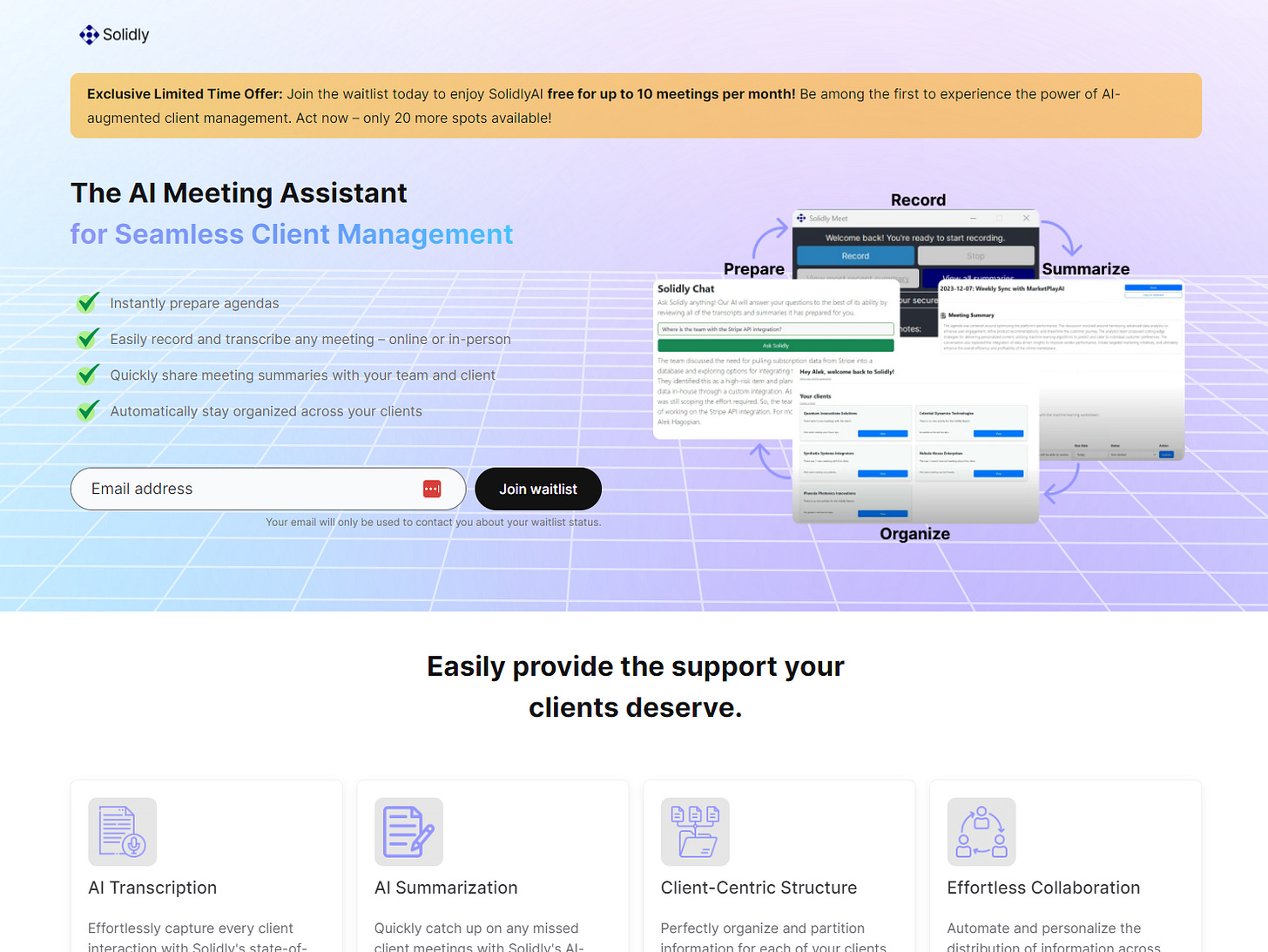The #1 Way to 10x Your Company's Odds of Success (Part 2 of 2)
How to prove your idea will work before you spend time on it. The two most important experiments I use to validate ideas.

👋🏽 Welcome to A Founder’s Life for Me! I’m Alek, and I’ll share my experiences building tech companies to provide practical recommendations on building your own thing.
Subscribe to get free access to all past and future posts.
Why I’m writing about this now
In my last newsletter, I outlined why directly addressing risks through rapid experimentation is the most important thing you can do as a founder. You have a 100% chance to succeed if you have no risks, so tackling risks head-on and ASAP is the best way to improve your company’s odds of success.
So, the first thing you’ve got to do is identify the risks. From there, you design the most efficient experiments to address them. I hope that by reading this, you 1) gain a mental model for thinking about the risks between you and your goals and 2) get ideas for rapid experiments to address these risks.
Types of risk impacting your company.
In the book Inspired by Marty Cagan, he outlines four primary types of risk for launching a product, which provides a good starting framework for designing experiments:
Value risk - whether customers will buy it or users will choose to use it
Usability risk - whether users can figure out how to use it
Feasibility risk - whether you can build what you need with the time, skills, and technology you have (or that you can reasonably acquire)
Business viability risk - whether the solution works for the business
As a founder, there’s a 5th type of risk that I add to his list:
Personal risk - whether it is something you want to do
If you have none of these risks, your company will succeed. The problem is that it’s hard to minimize all five risks and do it quickly.
My two favorite rapid experiments
When pursuing an idea, consider the risks most relevant to you. List them out and try grouping them into the five categories above to understand which type of risk is most important to you. Then, consider applying one of the following experiments:
Immediately start marketing and selling to address value risk.
Build a simple prototype to address feasibility risks.
I’ll discuss managing usability, business viability, and personal risks in future posts.
#1 Immediately start marketing and selling.
When starting a company, there’s always value risk to address (whether customers will buy it or users will choose to use it). Only 6% of ideas ever become commercially successful, and the odds go as high as 15% if you’ve gotten as far as to build the product.1 That means that the remaining 85% of ideas predominantly fail because customers aren’t choosing to buy them. So, addressing value risk is the most important thing you can do when you’re starting something new. However, quickly designing experiments to address value risk is hard for many reasons.
The only way to know whether people will buy your product is to sell it to them. So, the best way to address value risk is through marketing and sales. This is a challenge for me because that’s the part of the job I enjoy the least.
I like to build things. It’s why I’m a founder. However, this is a double-edged sword. If I spend my day making things, I’m postponing answering, “Will people buy this?” So, I’ve often waited too long to start selling my product, and, as a result, I’ve wasted time building things that people didn’t want.
The fastest experiment I’ve found for addressing value risk is immediately starting marketing and sales. If feasibility risk is minimal, you can begin marketing and selling before the product even exists.
A starter goal might be to see if you can find twenty customers willing to pay for your product. What would you need to convince twenty customers to pay for your product? Typically:
Materials explaining your product and pricing (website or slideshow)
A way for customers to express interest in buying your product (waitlist, email address, phone number)
A way to get your target customer to those materials (outreach or marketing)
By spending time on the above, you will get through idea iterations faster than by building the product each time. To that end, I use Webflow to quickly build pages like the one below to test out new ideas (no coding required). You can quickly get an idea out there and provide people with a way to say that they are interested.
#2 Build a simple prototype.
Feasibility risks are typically very addressable unless your idea is breaking new ground. Here are some examples of feasibility risk:
High Feasibility Risk: If I were building an AI barber that could give fully automated haircuts, there would be a big question of whether that’s feasible, given where we are today with AI and robotics.
Low Feasibility Risk: If I were building a local service that delivered fresh spices to people’s houses through delivery drones, there would be questions about whether the drones could lift the spices and whether any laws prohibit this type of service. Both of these risks feel relatively solvable.
When building SolidlyAI, my initial feasibility risk was “Will I be able to create AI-generated meeting summaries that are good.” The quickest experiment to measure this risk was to build a simple prototype. This simple prototype took a couple of days to make. The prototype itself was a text editor where people could upload their sloppy post-meeting notes and, in response, receive clean AI-generated meeting summaries. I was amazed at how well it worked and saw steady, returning usage. All of this indicated that the feasibility risk was minimal, and I should move on to address the value risk.

One size doesn’t fit all.
There’s no “one experiment to rule them all.” Every idea has a unique set of risks you’ll need to address. However, value risk is the most common risk that founders should tackle directly and ASAP. Not addressing value risk is the reason 85% of pursued ideas fail.
Recommendation: When you set out to build your own company or launch a new product, evaluate your risks. If your value risk is highest (which it probably is), start by marketing and selling it instead of building. Try finding 20 people willing to pay for your product. Consider building the product something that you need to earn.
Successfully running your company comes down to quickly overcoming thousands of risks. I’ll share more rapid experiments I use in future newsletters. If you’re interested in learning more, subscribe through the link below.



If there are any specific topics you'd like to see me write about, please let me know here!